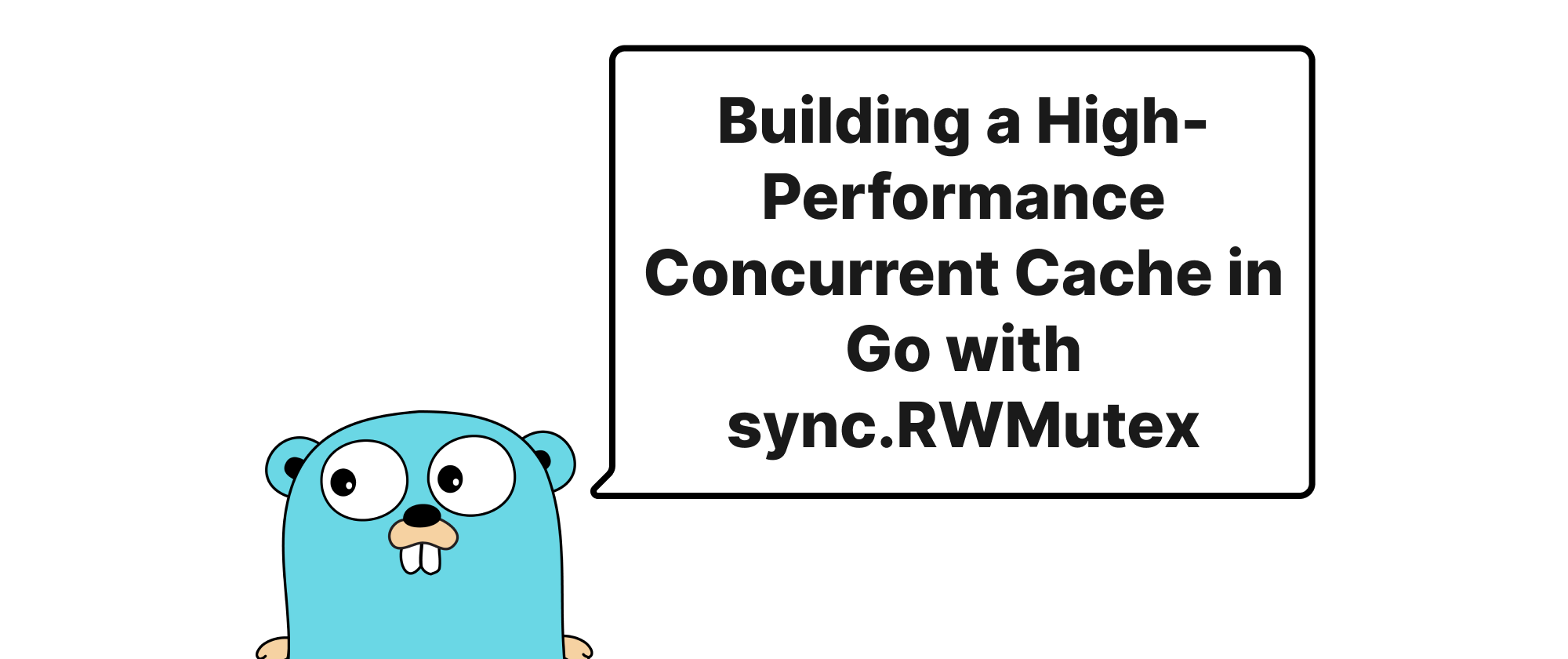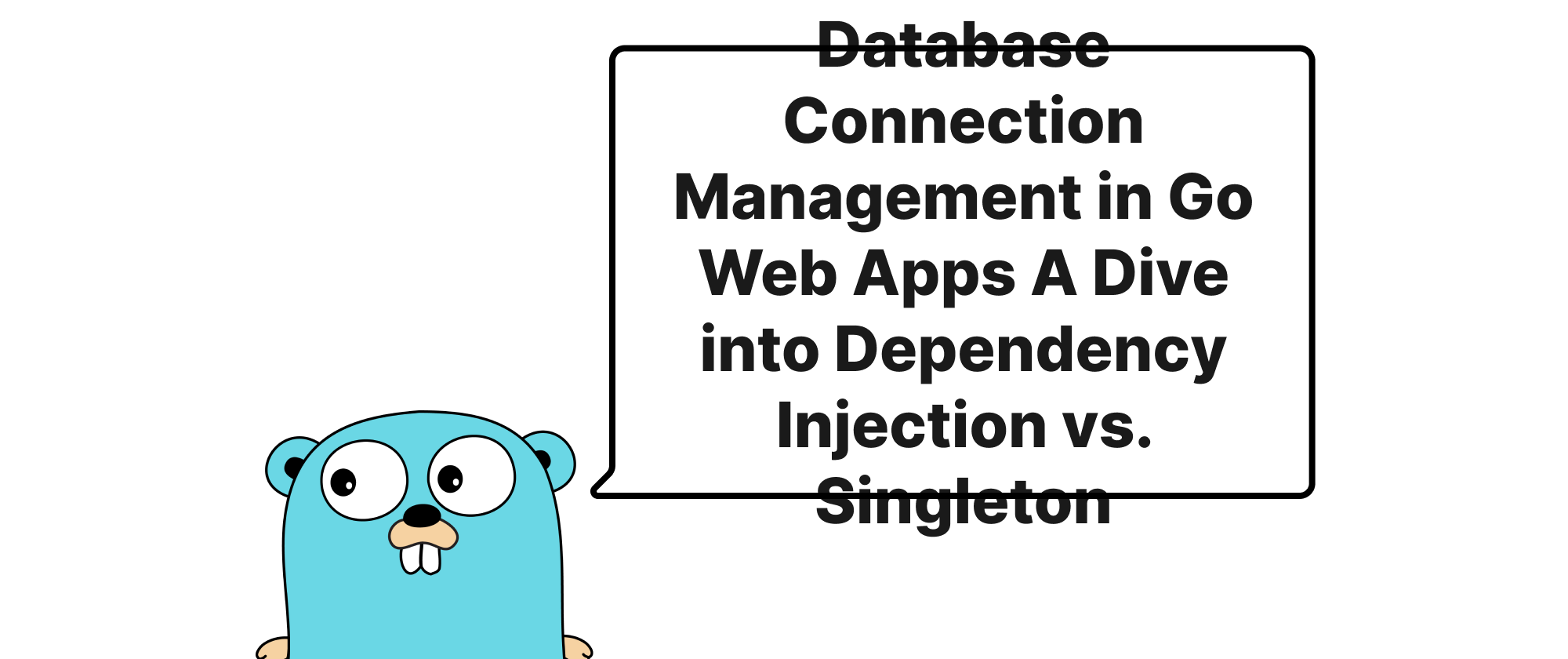Building a High-Performance Concurrent Cache in Go with sync.RWMutex
Ethan Miller
Product Engineer · Leapcell

Introduction
In modern microservices architectures and high-throughput applications, data retrieval from persistent storage (like databases or external APIs) is often a performance bottleneck. Repeatedly fetching the same data can introduce significant latency and consume unnecessary resources. An in-memory cache provides an elegant solution by storing frequently accessed data closer to the application, drastically reducing response times and offloading backend systems. However, in concurrent Go applications, safely accessing and modifying this shared cache presents its own challenges. Uncontrolled concurrent access can lead to data races, corrupting the cache and producing incorrect results. This article dives into how Go's sync.RWMutex can be effectively utilized to construct a high-performance, concurrent-safe in-memory cache, ensuring both data integrity and optimal application performance.
Core Concepts and Implementation
Before we build our cache, let's briefly define some key terms that are central to concurrent programming and caching in Go.
- Concurrency: The ability to handle multiple tasks seemingly at the same time. In Go, this is achieved through goroutines.
- Thread-Safety/Concurrency-Safety: Ensuring that shared data structures remain consistent and correct when accessed by multiple goroutines concurrently.
- Data Race: A condition where multiple goroutines access the same memory location concurrently, and at least one of them is a write, without proper synchronization. This leads to undefined behavior.
- Mutex (Mutual Exclusion): A synchronization primitive that grants exclusive access to a shared resource to only one goroutine at a time. Go provides
sync.Mutexfor this purpose. - RWMutex (Read-Write Mutex): A more specialized mutex that allows multiple readers to access a shared resource concurrently, but requires exclusive access for a writer. This is crucial for performance in read-heavy scenarios.
Why sync.RWMutex for Caching?
In a typical caching scenario, reads far outnumber writes. Many goroutines might want to retrieve data from the cache simultaneously. Using a standard sync.Mutex would force all these readers to wait for each other, even when they are only reading, leading to degraded performance. sync.RWMutex addresses this by allowing multiple readers to hold a read lock concurrently. When a write operation is required (e.g., adding or updating an item in the cache), the writer acquires a write lock, which blocks all new readers and writers until the write operation is complete. This optimizes for read performance while guaranteeing data consistency during writes.
Building Our Cache
Let's design a simple, generic in-memory cache that stores key-value pairs.
First, we define the structure of our cache:
package cache import ( "sync" "time" ) // CacheEntry represents an item stored in the cache. type CacheEntry[V any] struct { Value V Expiration *time.Time // Optional: time after which the entry is considered stale } // MyCache defines our concurrent-safe in-memory cache. type MyCache[K comparable, V any] struct { data map[K]CacheEntry[V] mutex sync.RWMutex } // NewCache creates and returns a new instance of MyCache. func NewCache[K comparable, V any]() *MyCache[K, V] { return &MyCache[K, V]{ data: make(map[K]CacheEntry[V]), } }
Here, MyCache holds a map to store our data and a sync.RWMutex to protect concurrent access. CacheEntry can optionally include an expiration time, which we'll address later for cache eviction policies.
Now, let's implement the core cache operations: Set, Get, and Delete.
Setting a Value
// Set adds or updates an item in the cache. // If expiration is nil, the item never expires. func (c *MyCache[K, V]) Set(key K, value V, expiration *time.Duration) { c.mutex.Lock() // Acquire a write lock defer c.mutex.Unlock() // Ensure the lock is released var expTime *time.Time if expiration != nil { t := time.Now().Add(*expiration) expTime = &t } c.data[key] = CacheEntry[V]{ Value: value, Expiration: expTime, } }
The Set method acquires a write lock using c.mutex.Lock(). This ensures that only one goroutine can modify the data map at any given time, preventing data races during writes. The defer c.mutex.Unlock() statement guarantees that the lock is released even if an error occurs within the function.
Getting a Value
// Get retrieves an item from the cache. // Returns the value and true if found and not expired, otherwise returns zero value and false. func (c *MyCache[K, V]) Get(key K) (V, bool) { c.mutex.RLock() // Acquire a read lock defer c.mutex.RUnlock() // Ensure the read lock is released entry, found := c.data[key] if !found { var zeroValue V // Initialize zero value for V return zeroValue, false } // Check for expiration if entry.Expiration != nil && time.Now().After(*entry.Expiration) { // Item is expired, treat as not found for now. // A background goroutine could handle actual eviction. var zeroValue V return zeroValue, false } return entry.Value, true }
The Get method acquires a read lock using c.mutex.RLock(). Multiple goroutines can hold a read lock concurrently, which is excellent for read performance. The defer c.mutex.RUnlock() ensures the read lock is released. It also includes basic expiration logic.
Deleting a Value
// Delete removes an item from the cache. func (c *MyCache[K, V]) Delete(key K) { c.mutex.Lock() // Acquire a write lock defer c.mutex.Unlock() // Ensure the lock is released delete(c.data, key) }
Similar to Set, Delete requires a write lock because it modifies the underlying data map.
Application Example
Let's see how to use this cache in a concurrent Go program.
package main import ( "fmt" "math/rand" "strconv" "sync" "time" "your_module_path/cache" // Assuming your cache package is at this path ) func main() { myCache := cache.NewCache[string, string]() var wg sync.WaitGroup // --- Writers --- for i := 0; i < 5; i++ { wg.Add(1) go func(writerID int) { defer wg.Done() for j := 0; j < 10; j++ { key := fmt.Sprintf("key-%d", rand.Intn(20)) // Random keys value := fmt.Sprintf("value-from-writer-%d-%d", writerID, j) // Set some with expiration, some without var expiration *time.Duration if rand.Intn(2) == 0 { // 50% chance to set an expiration exp := time.Duration(rand.Intn(5)+1) * time.Second // 1-5 seconds expiration = &exp fmt.Printf("[Writer %d] Setting key: %s, value: %s with expiration: %v\n", writerID, key, value, exp) } else { fmt.Printf("[Writer %d] Setting key: %s, value: %s (no expiration)\n", writerID, key, value) } myCache.Set(key, value, expiration) time.Sleep(time.Duration(rand.Intn(50)) * time.Millisecond) // Simulate work } }(i) } // --- Readers --- for i := 0; i < 10; i++ { wg.Add(1) go func(readerID int) { defer wg.Done() for j := 0; j < 20; j++ { key := fmt.Sprintf("key-%d", rand.Intn(20)) // Try to read various keys val, found := myCache.Get(key) if found { fmt.Printf("[Reader %d] Found key: %s, value: %s\n", readerID, key, val) } else { fmt.Printf("[Reader %d] Key %s not found or expired.\n", readerID, key) } time.Sleep(time.Duration(rand.Intn(30)) * time.Millisecond) // Simulate work } }(i) } // Wait for a bit to allow some expirations to occur time.Sleep(2 * time.Second) // --- Deletions (one goroutine for simplicity) --- wg.Add(1) go func() { defer wg.Done() for i := 0; i < 5; i++ { key := fmt.Sprintf("key-%d", rand.Intn(20)) fmt.Printf("[Deleter] Attempting to delete key: %s\n", key) myCache.Delete(key) time.Sleep(time.Duration(rand.Intn(100)) * time.Millisecond) } }() wg.Wait() fmt.Println("\nAll operations completed.") // Verify final state (purely for demonstration) fmt.Println("\nFinal cache state (snapshot):") cSlice := myCache.GetAll() // Assume we add a GetAll method for introspection if len(cSlice) == 0 { fmt.Println("Cache is empty.") } else { for key, entry := range cSlice { expStr := "never" if entry.Expiration != nil { expStr = entry.Expiration.Format(time.RFC3339) } fmt.Printf("Key: %v, Value: %v, Expires: %s\n", key, entry.Value, expStr) } } } // Add a helper method for inspection (for demonstration, also needs RLock) func (c *MyCache[K, V]) GetAll() map[K]CacheEntry[V] { c.mutex.RLock() defer c.mutex.RUnlock() // Return a copy to prevent external modification snapshot := make(map[K]CacheEntry[V]) for k, v := range c.data { snapshot[k] = v } return snapshot }
This example demonstrates how multiple goroutines (Writers, Readers, Deleters) can concurrently interact with our MyCache instance. The output will show interleaved messages, but thanks to sync.RWMutex, all cache operations on the data map are performed safely without data races. Notice how sync.WaitGroup is used to allow the main goroutine to wait for all worker goroutines to complete.
Further Enhancements and Considerations
- Eviction Policies: Our current cache only invalidates expired items on
Get. A more robust cache would have a background goroutine that periodically sweeps and evicts expired items (LRU,LFU, etc.). Implementing this would require careful synchronization with the main cache operations. - Cache Size Limit: For large datasets, caches often have a maximum size. When the limit is reached, an eviction policy decides which item to remove to make space for new ones.
- Generics: Go's generics (used here as
[K comparable, V any]) make our cache reusable for various key and value types without needing type assertions or separate implementations. - Error Handling: Depending on the application, you might want
Getto return an error instead of just a boolean when an item is not found or expired. - Performance Benchmarking: For critical applications, benchmark different synchronization mechanisms and eviction strategies to find the optimal configuration.
Conclusion
Building a high-performance, concurrent-safe in-memory cache is a common requirement in many Go applications. By carefully employing sync.RWMutex, we can create a robust cache that efficiently handles multiple concurrent read operations while ensuring data integrity during write operations. This approach balances performance and safety, making sync.RWMutex an indispensable tool for building scalable and reliable concurrent systems in Go.
Leveraging sync.RWMutex delivers a foundational pattern for concurrent data access, enabling fast, consistent in-memory caching solutions for scalable Go applications.


